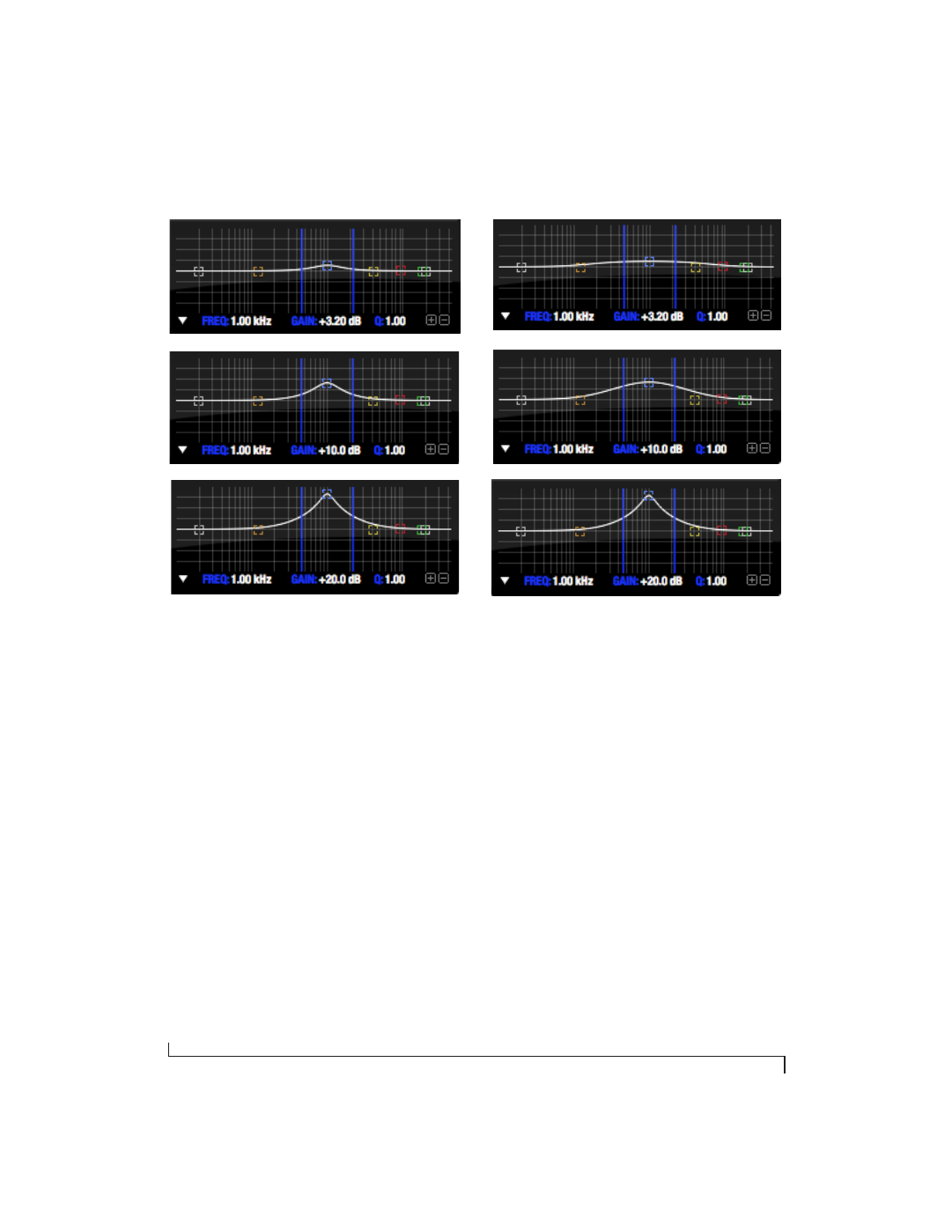MOTU 828x 28x30 Audio Interface with ThunderTechnology User Manual
Page 84

C U E M I X F X
84
Type III
Figure 9-15: Type III EQ filter style.
The
Type III
EQ filter increases Q as boost is
applied. Therefore, lower amounts of boost
provide a softer, “wider” EQ effect (since the
affected frequency range widens), while higher
boost tends to sound louder and more “up front”,
due to the increase in Q as the gain is increased.
The more gentle Q curve at lower settings is well
suited for overall EQ fills and more subtle
corrections in instrument and vocal sources.
Boosting or cutting by small amounts will seem to
produce the effect that your ear expects, without
the need to adjust Q. As a result, this filter style, and
similar EQs with this characteristic behavior, are
often referred to as being more “musical”. More
specifically, this style emulates the classic Neve
EQs, their modern derivatives and later SSL G
series EQs. Many current popular outboard
“boutique” EQs exhibit this same gain/Q
relationship.
Type IV
Figure 9-16: Type IV EQ filter style.
The
Type IV
EQ filter is a more extreme form of the
Type III filter. It exhibits a high degree of
interaction between Q and gain in order to
maintain as closely as possible an equal amount of
area under the response curve as gain is adjusted.
Type IV is the most gentle of the four EQ styles and
is ideal for large scale EQ adjustments, especially
on sub-mixes and complete mixes. This EQ style is
also ideal for any situations where subtle changes in
the overall character of the sound are desired. For
example, it can be used for mastering applications,
such as the overall adjustments that must often be
applied to entire tracks to match other tracks on
the album.
